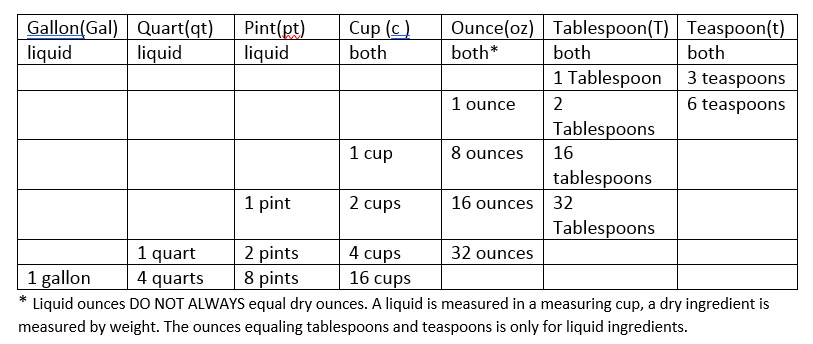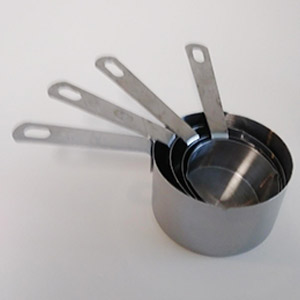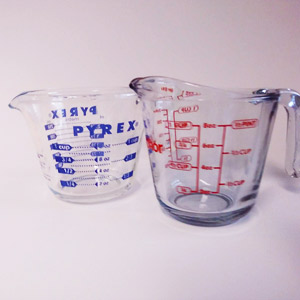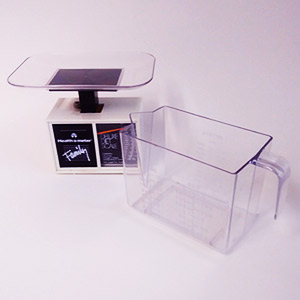
The first thing that we do when cooking or baking with a recipe is measuring ingredients. For some of us its just “known” that there are different ways to do this depending on the type of ingredient we are using.
In much of the world, measuring of dry ingredients is done by weight, so instead of a cup of flour, they recipe would call for 128 grams. Really good cooks know that the amount of moisture in dry ingredients can make a difference in the outcome of their baking and want to account for that.
I have a recipe from my mother-in-law that calls for two cents yeast. It took me a while (and some trial and error) to finally work out that 2 cents was about a package of yeast in todays availability and for that recipe.
Understanding Measurements and Equivalencies
While cooking is usually more forgiving of measurements being off, baking is basically chemistry, and its important that proportions are correct. That is why its so important to get the measurements right.
First, it helps to know and understand measurements. The table below will help. Items in the same row are equivalent.

Wet ingredients include anything wet (duh) like water, milk, vanilla, soup stock, sometimes even eggs are measured this way. Recipes may call for one egg, or they occasionally may call for 4oz (ounces) of egg.
Dry ingredients would be things like flour, sugar, spices or shortening.
Items often measured by weight might be cheese, chocolate chips, nuts. A recipe may say to use one 12ounce bag of chocolate chips, or they may list 2 cups of chocolate chips.
Using the Right Tools to Measure Ingredients
Once upon a time, people actually used a coffee or tea cup to measure a cup and a normal kitchen teaspoon for a teaspoon. But that’s a lot of why there were good cooks and bad cooks. A cup could be 6-10 ounces and teaspoons and teaspoons and tablespoons also vary in capacity. So for cooking, its important to use measuring cups, spoons and a kitchen scale.
Measuring Spoons

Measuring spoons work for both liquid and dry ingredients. For dry ingredients, the spoon is overfilled then leveled off with a knife or spatula so its even. For liquid ingredients, the extra runs off the spoon (don’t measure either dry or liquid over your mixing bowl or pan or you may get too much).
Now technically you could do the same thing (using a dry measure) with larger amounts, like cups, but you could also have a lot of run off.
But there are liquid measuring cups and dry measuring cups. What’s the difference?
Dry and Liquid Measuring Cups

Dry measuring cups need to be completely full then leveled off at the top with a knife or spatula to give you the correct measure.

Liquid measuring cups allow you to see how much you have as you pour the liquid into the cup. If you pour too much you can see to pour it out or add more if needed. Sometimes recipes say things like “one egg and add enough water to equal one half cup”, and liquid measuring cups are perfect for that. Using liquid measuring cups for liquids saves on waste.
The Kitchen Scale for Measuring by Weight

Sometimes recipes will ask for ingredients by weight, but the best reason for a kitchen scale is portion control on meats. In any case, the important thing is to know how to use it.
Often they have a plate on top. Mine also has a cup like holder. The cup like thing weighs more than the plate. Be sure that before you start adding ingredients that your pointer is at zero (that allows for the weight of the plate or container). They have an adjusting device that you move until the pointer is at zero ounces.
Then add your ingredients until the pointer is at the weight you want.
Knowing how and when to use which measuring device will make cooking (and especially baking) a lot easier.
Happy cooking!

Leave a Reply